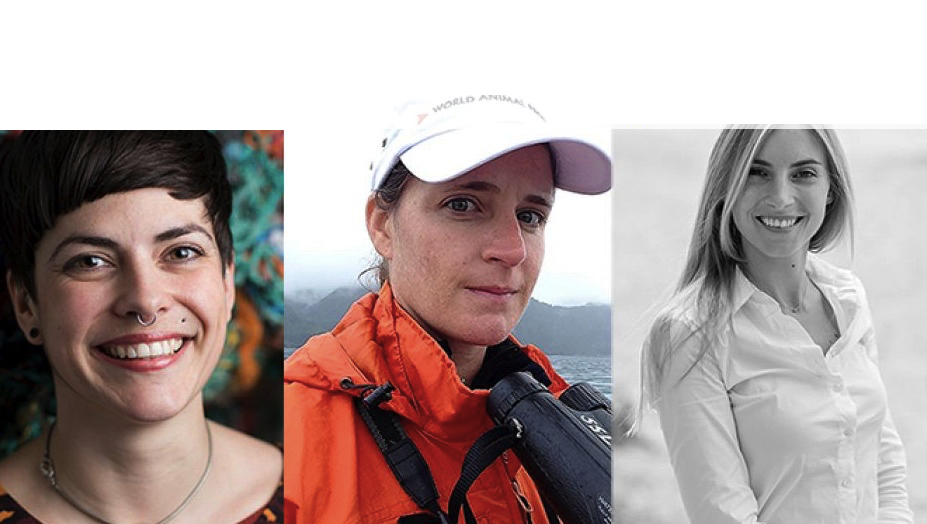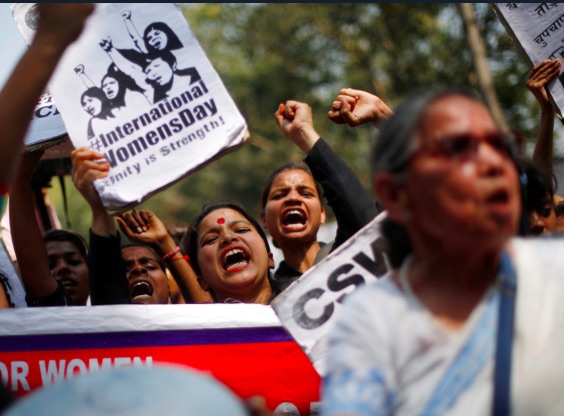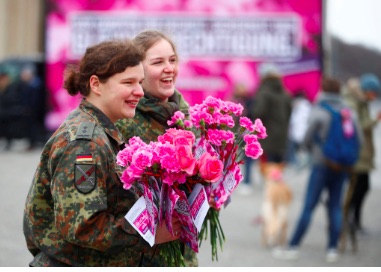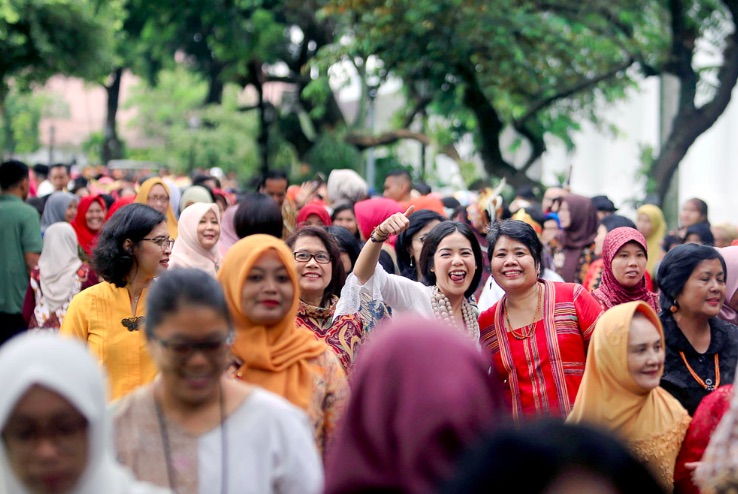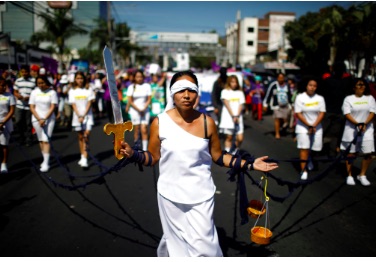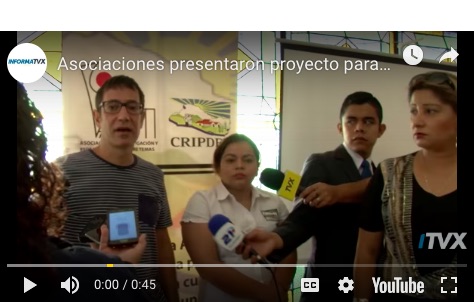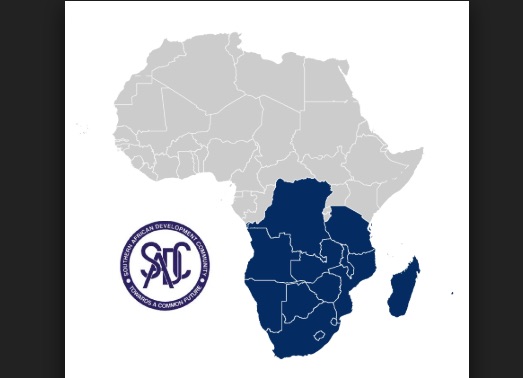. . SUSTAINABLE DEVELOPMENT . .
An article by Julia Conley in Common Dreams reprinted according to a Creative Commons Attribution-Share Alike 3.0 License
All over the planet on Friday, millions of children and young adults walked out of their classrooms in an unprecedented collective action to demand a radical and urgent shift in society’s energy and economic systems in order to avert the worst impacts of human-caused global warming and climate change.

In the United Kingdom, thousands of young people were among the millions worldwide who called on their governments to declare a climate emergency and take action to stop the climate crisis. (Photo: Chris J. Ratcliffe/Getty Images)
With demonstrations in more than 100 countries and tens of thousands of schools, the worldwide Climate Strike is the largest since 16-year-old Greta Thunberg sparked a wave of increasingly huge marches and walkouts with her one-person strike outside the Swedish Parliament last year.
Since then, Thunberg has admonished and appealed to world leaders at COP24 and Davos, successfully securing a commitment from the European Union to fight the climate crisis while inspiring strikes all over the world. European students began holding weekly walkouts in Brussels in December, while Australian, and German young people are among those who have organized strikes as well.
“We have been born into this world and we have to live with this crisis, and our children and our grandchildren,” Thunberg told a crowd of her peers in Stockholm in Friday. “We are facing the greatest existential crisis humanity has ever faced. And yet it has been ignored. You who have ignored it know who you are.”
In Pictures:

People hold up signs and vent their frustrations during a Climate Change Awareness rally at Sydney Town Hall on March 15, 2019 in Sydney, Australia. The protests are part of a global climate strike, urging politicians to take urgent action on climate change. (Photo by Don Arnold/Getty Images)
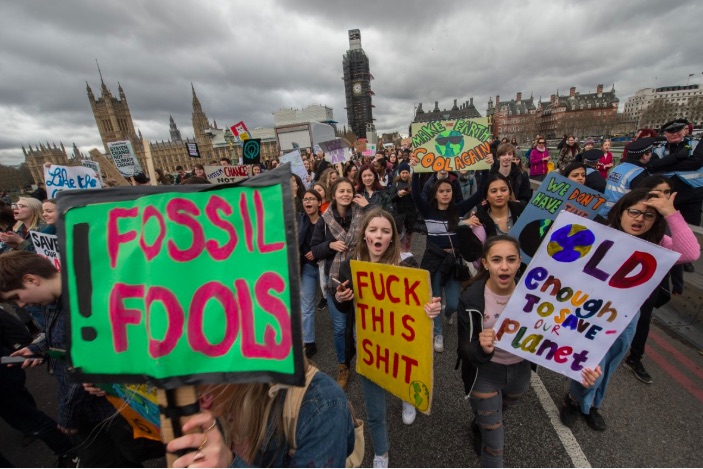
The scene on Westminster bridge as school children block traffic and march across the river on March 15, 2019 in London, England. Thousands of pupils from schools, colleges and universities across the UK will walk out today in the second major strike against climate change this year. Young people nationwide are calling on the Government to declare a climate emergency and take action. Similar strikes are taking place around the world today including in Japan and Australia, inspired by 16-year-old Greta Thunberg who criticised world leaders at a United Nations climate conference. (Photo by Guy Smallman/Getty Images)

Environmentalists and concerned citizens gather and hold a picket to voice out concern on environmental and climate issues on March 15, 2019 in Quezon city, Philippines. Students around the world took to the streets on March 15 to protest a lack of climate awareness and demand that elected officials take action on climate change. Inspired by Greta Thunberg, the 16-year-old environmental activist who started skipping school since August 2018 to protest outside Sweden’s parliament, school and university students worldwide have followed her lead and shared her alarm and anger. (Photo by Jes Aznar/Getty Images)

Greta Thunberg participates in a strike outside of the Swedish parliament house, Riksdagen, in order to raise awareness for global climate change on March 15, 2019 in Stockholm, Sweden. (Photo by MICHAEL CAMPANELLA/Getty Images)

Schoolchildren take part in the Global Climate Strike For Future on March 15, 2019 in Rome, Italy. Today, thousands of students took part in the Student Global Climate Strike to demand for urgent measures and concrete action to combat climate change, the global warming and to protect our future. The strike is inspired by Greta Thunberg, a Swedish school girl who in 2018 went on school strike to make adults and lawmakers take climate change action. (Photo: Antonio Masiello/Getty Images)
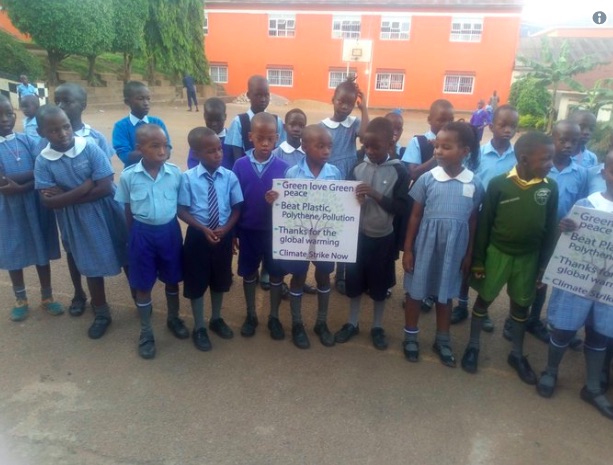
@Greenpeace #FridaysForFuture #climatestrike #schoolstrike4climate Uganda it’s happening
(continued in right column)
Are we seeing the dawn of a global youth movement?
(continued from left column)

@MikeHudema LOOK AT THE SIZE OF THE MARCH IN BRUSSELS!!! Young people are rising in 2052 places in 123 countries on every continents.

@EricHolthaus Sign in St. Paul Minnesota: ”If you don’t act like adults, we will.”#climatestrike #FridaysForFuture

@Greenpeace Officially more than 150,000 students on #ClimateStrike in Montreal, the number just came in!! #FridaysForFuture #schoolstrike4climate #YouthStrike4Climate

@lifelearner47 Oh boy, look what happened in Lisbon, Portugal.#FridaysForFuture #ClimateStrike

@350 In Kyiv, Ukraine, 100+ students appealed to Prime Minister Volodymyr Groisman and the govt to recognize climate change as one of the most pressing nationwide problems and to take appropriate action. #Climatestrike took place in six cities in Ukraine. Photos: Olena Angelova

@MikeHudema HUGE! crowd out in #Barcelona as far as the eye can see. Young people are rising in 2052 places in 123 countries on every continents.

@MauroAstete Mientras algunos discuten por control de identidad a menores, #AdmisiónJusta u otras pequeñeces, los jóvenes solo piden tener un futuro para vivir ¿Se lo daremos? @sebastianpinera @MMAChile @CarolaSchmidtZ #FridaysForFuture #Santiago #climatechange

Oladosu Adenike @the_ecofeminist Its my 16 weeks ”Our earth is on fire”#ClimateStrike#FridaysForFuture in Nigeria. Now is the time for us to actions.

@AntoineTifine We are thousands of people in #Paris for the global strike for climate ! #Youth4Climate #FridayForFuture @GretaThunberg @FYEG @YouthFrance

@munwarenj #climatestrike #fridaysforfuture #Bangladesh #barishal
(Thank you to Janet Hudgins, the CPNN reporter for this article.)


